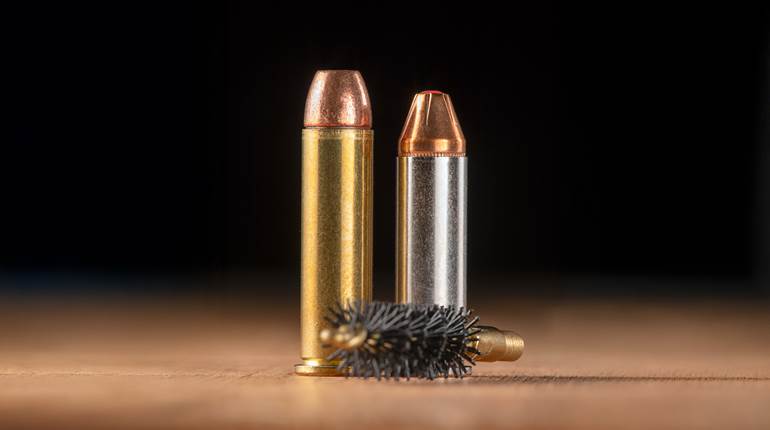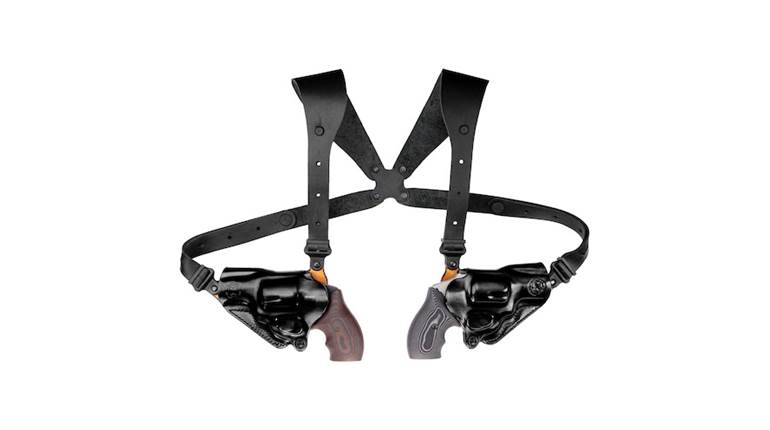
It took more than a century, but the semi-automatic pistol is now the go-to handgun for self-defense. The revolver, which preceded the self-loader, had a pretty good run—about 150 years. Evolving tactics and modern manufacturing capabilities, along with popular culture, have brought semi-auto pistols to the forefront. Now the question is: Should the revolver be put out to pasture as a self-defense handgun?
The Simpler Choice
A self-defense handgun is an extremely personal choice. Choosing a particular handgun should be based upon reliability, ease of use, power, concealability and cost—in roughly that order.
Semi-auto pistols are great instruments, but they require more training than revolvers to be used effectively. Make no mistake, I am fully aware that all firearms require training and practice to be of any real worth, but the semi-auto is, by its nature, more complicated.
Family members who may not be enthusiastic about guns and shooting but still want to be able to defend themselves will often find that a double-action revolver is more to their liking. Tactics and prior contingency planning come in to play, of course, but all potentially life-threatening events induce a great deal of trepidation. In these types of situations would it not be better to have a loved one using a simpler tool?
Power, Baby
Another reason I often prefer revolvers is that they continue to win the power race, at least in terms of handguns that can be easily carried. There are numerous compact snub-nosed revolvers that can do the job including some in power-punching calibers. While most people only need a .38 Spl. for typical use, a .357 Mag. snubby provides the versatility to choose between .38s and more powerful .357 rounds if there is a need.
In the backcountry where I live, confrontations with wild animals occur from point-blank to ranges out to several dozen yards making one-shot stoppage an important factor against coyotes, wolves, feral dogs and rabid animals of various sizes. You might ask, “Several dozen yards? Why not simply run away?” Consider what you might have to do if the attack is on a companion, pet or livestock. Given these parameters, power—and flat trajectory—become a real factor in eliminating the threat.
In the Big, Bad City
Urban environments have their own tactical parameters. When I head to town I usually pack a revolver. For one thing, I simply prefer a revolver. Also, I am usually not overly concerned whether or not the gun prints. I live in a gun-friendly state and many people are armed, so as long as I am not brandishing it, the bulge of a revolver or even the “peek-a-boo” of the holster causes virtually no pause.
For most people, summer months are more difficult for concealed carry as few besides police officers or private security personnel run around in tactical gear with a voluminous tac vest for cover. When I lived in urban environs, I often wore cargo shorts—which are very voluminous, especially in the pockets. I often carried a small Smith & Wesson J-frame revolver in those pockets. I started with a dehorned hammer Model 60, but its weight almost ensured printing and left me a bit unbalanced. A few years ago I purchased an 11-ounce Model 340PD in .357 Mag. Even now when the weather turns warm that revolver is a constant reassurance that I have at least some security as well as discreteness.
If my travels had me passing through more dangerous areas, a powerful semi-auto would be my hands-down choice. Were I a shopkeeper in an area where robberies by multiple assailants were not uncommon, a slab-sided autoloader with spare magazines would be my constant companion. However, for a day in shorts where a belt holster would be uncomfortable, my choice would be an ultra-light wheelgun in a windbreaker pocket.
Best choice?
Some may challenge my offering that a revolver can be the best choice for a self-defense handgun. That may be true, but we have already seen where, in less-populated areas, the power that a revolver brings with it is a blessing. Some may feel well-prepared to pepper a wild animal with 19 shots of 9 mm (assuming you could get all 19 shots off), and that is certainly their choice. But I would still counter that the revolver’s greater power and flatter trajectory make it the preferred choice in wide open spaces.
For those preferring a more civilized environment, I also maintain that a suitable revolver is often the best choice. We have already discussed the complication factor vis-à-vis a less intensively trained shooter. For most civilians involved in a deadlyforce encounter, the event is over in three shots or less. That swelled-up 15- to 19-round double-stack magazine is a lot of weight to pack, and if the gun is uncomfortable or a nuisance to carry, it won’t be on your hip when you need it. In addition, most concealable handguns have abbreviated barrels, and shorter barrels deliver less punch from a given cartridge. Here again, a revolver can help make up for some of that loss of power.
However, do not construe what I have said here to be dissing the semi-auto pistol. At any moment in my home I am within a few steps of one of several 1911 pistols. They are a comfort, and since I have been shooting the 1911 platform for more than three decades, I am very comfortable with them. In virtually any confrontation I envision myself in, I know I am well equipped to deal with those threats. And, yes, there times when one of those semi-autos is my choice for concealed carry.
The self-loading pistol has evolved into a reliable, life-saving instrument. Its acceptance worldwide has made it the handgun of choice by most people. But even though the wheelgun is approaching 200 years of age, the old girl is still a darn good choice in many situations—and sometimes the best choice.

















![Winchester Comm[94]](/media/1mleusmd/winchester-comm-94.jpg?anchor=center&mode=crop&width=770&height=430&rnd=134090756537800000&quality=60)
![Winchester Comm[94]](/media/1mleusmd/winchester-comm-94.jpg?anchor=center&mode=crop&width=150&height=150&rnd=134090756537800000&quality=60)


















